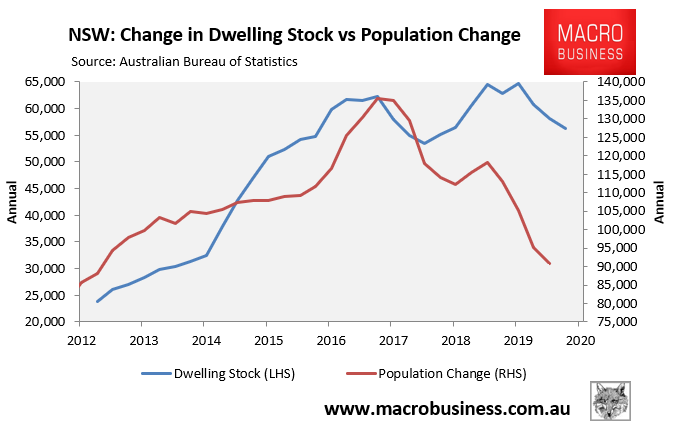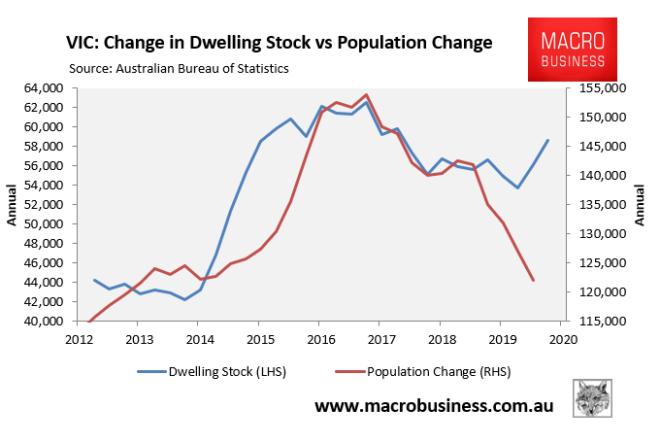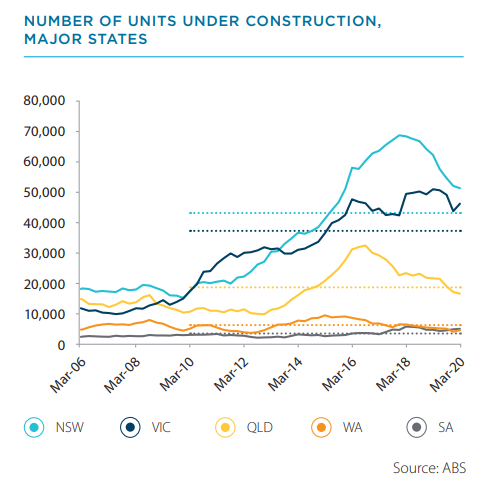We already know that Australia is headed for a massive oversupply of housing, especially across Sydney and Melbourne.
Even before COVID-19 hit, Sydney and Melbourne were headed into oversupply, as illustrated in the charts below:


The situation has obviously worsened, with immigration collapsing at the same time as apartment construction rates are running above decade averages across these two cities:

According to Norman Day, Lecturer in Architecture at Swinburne University of Technology, COVID-19 and the widespread adoption of working from home will make many office building redundant meaning they will have to be converted into dwellings:
Buildings that are no longer fit for purpose, or not required in a new detached working environment, could be repurposed as housing. Empty office blocks, shops and stores and unused teaching facilities could all be recycled for social and community low-cost rental housing… underused office buildings will not be needed as offices. They can become part of the new model for blended home-and-work operations…
As a byproduct of repurposing old buildings, we’d benefit the environment. Re-use conserves natural resources and minimises the need for new materials. That’s because these adapted buildings are effectively already half built.
If things play out as suggested by Norman Day, then this means that Australia’s dwelling oversupply will be worse than thought. It will also mean less dwellings will need to be built, adversely impacting construction activity.

